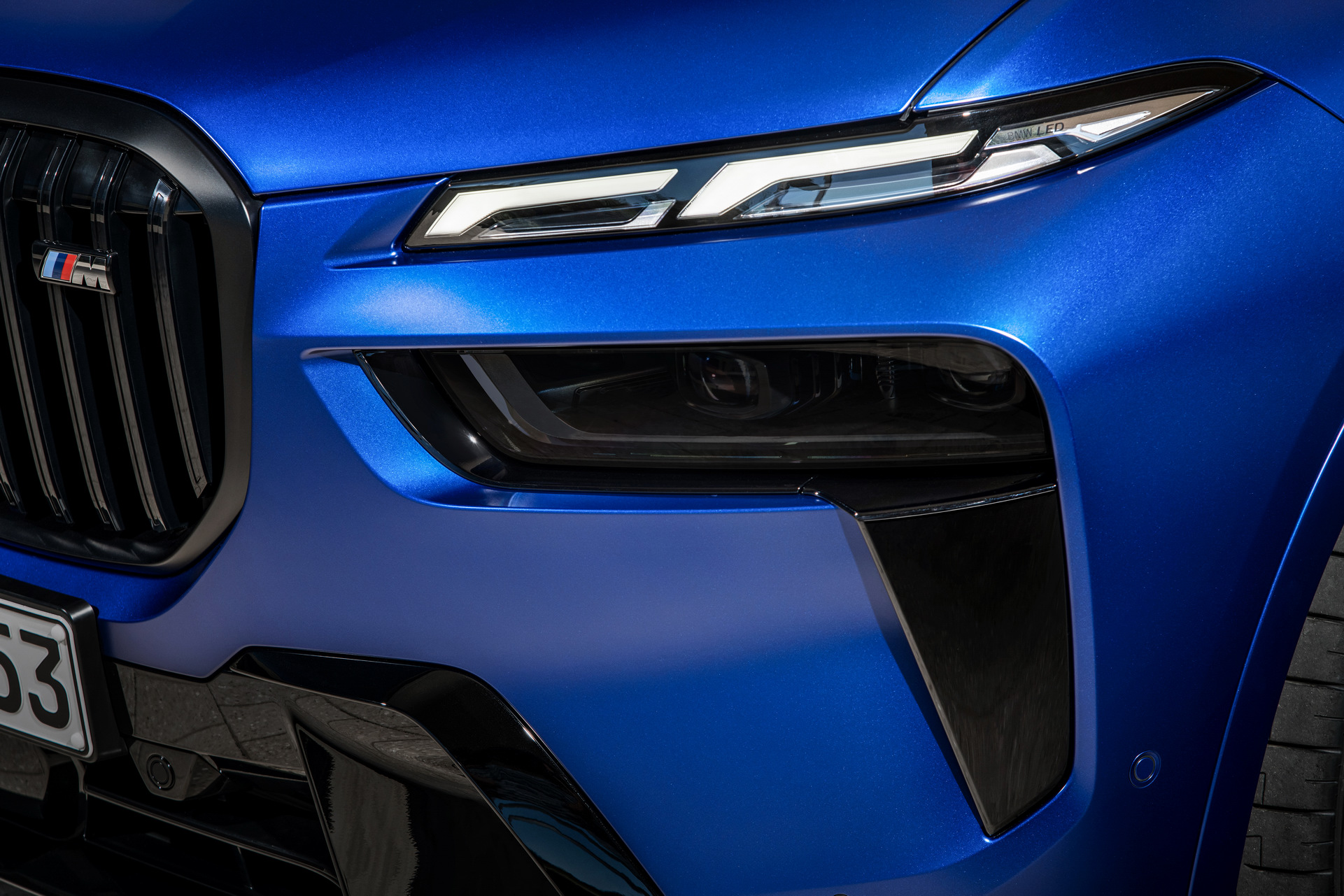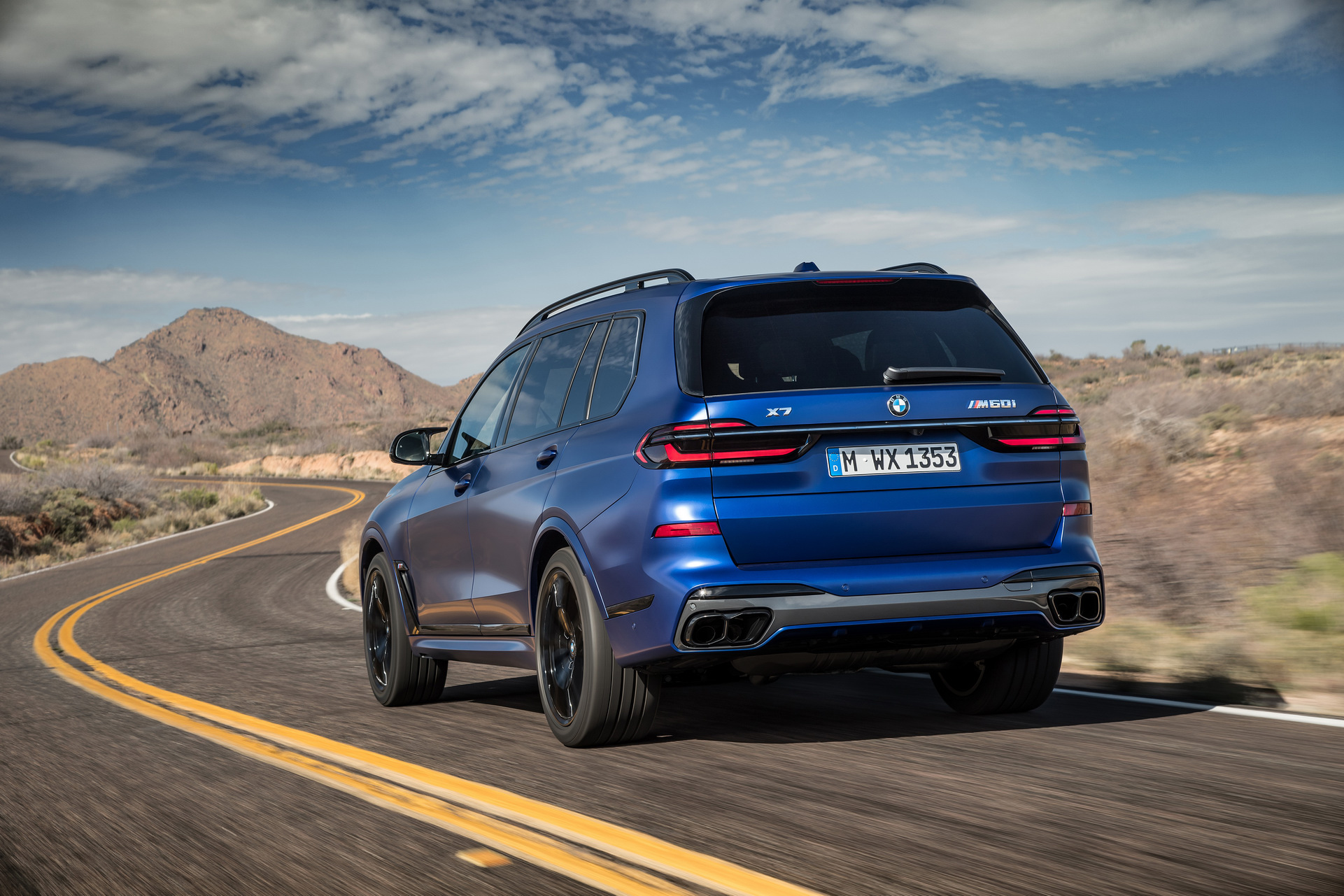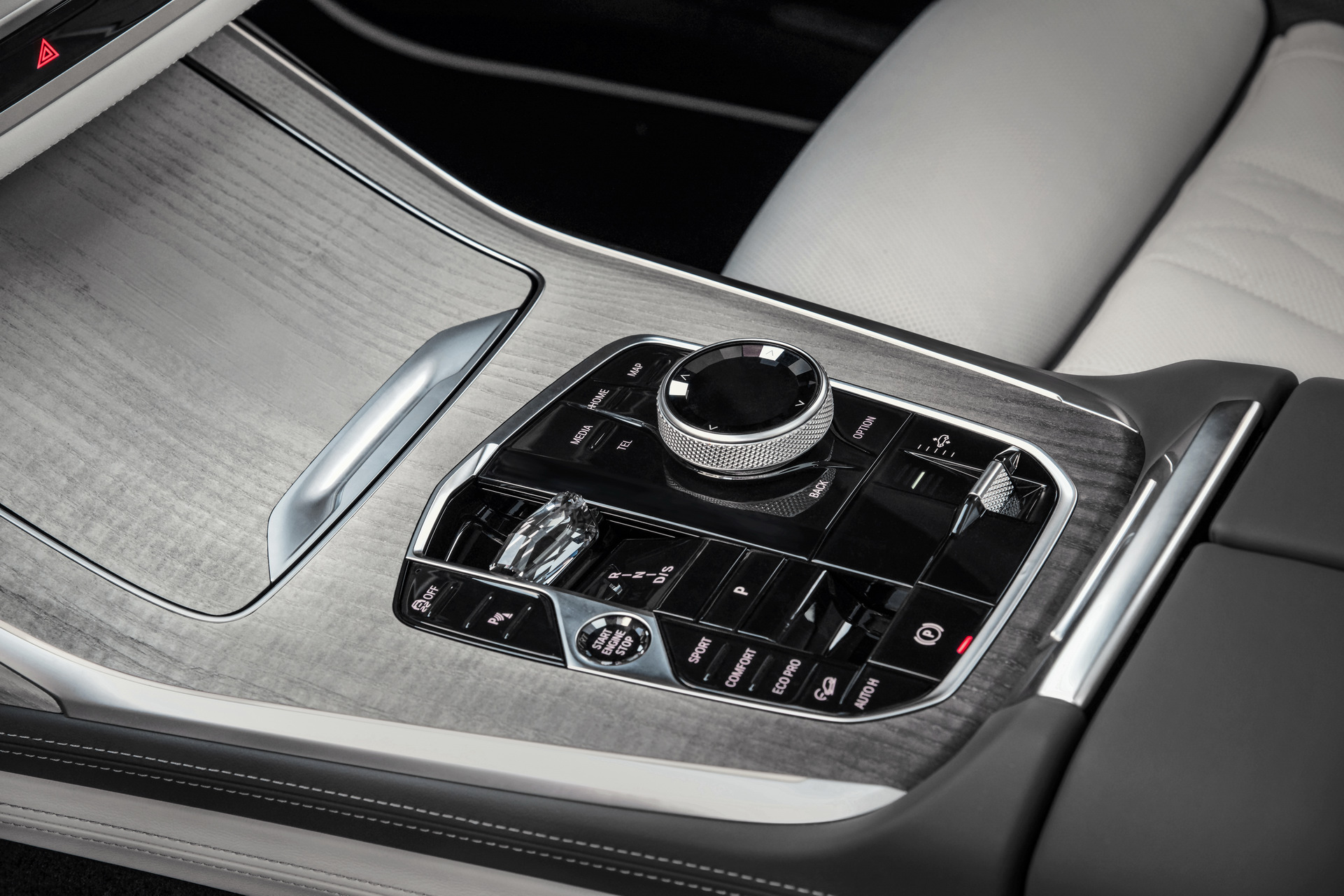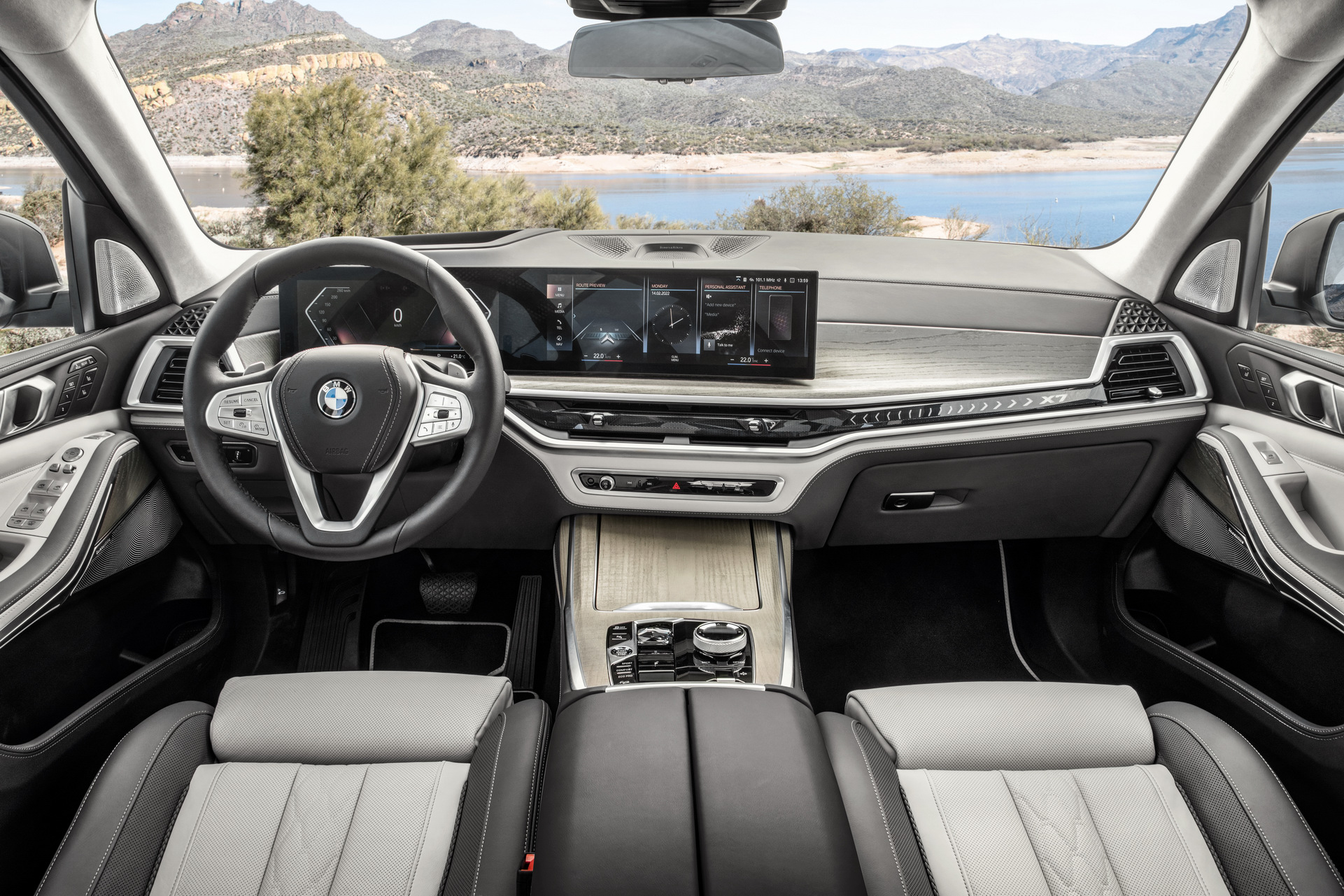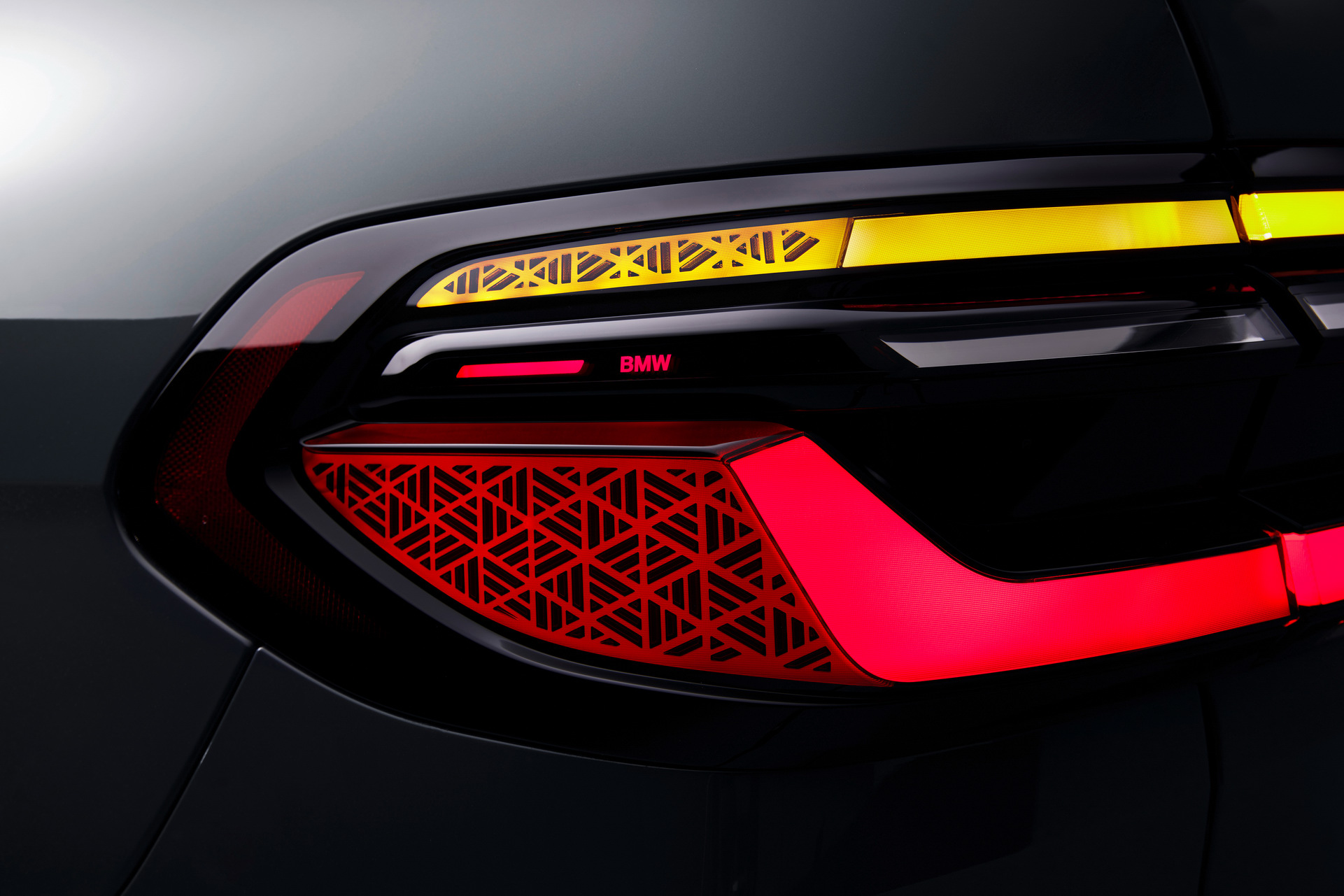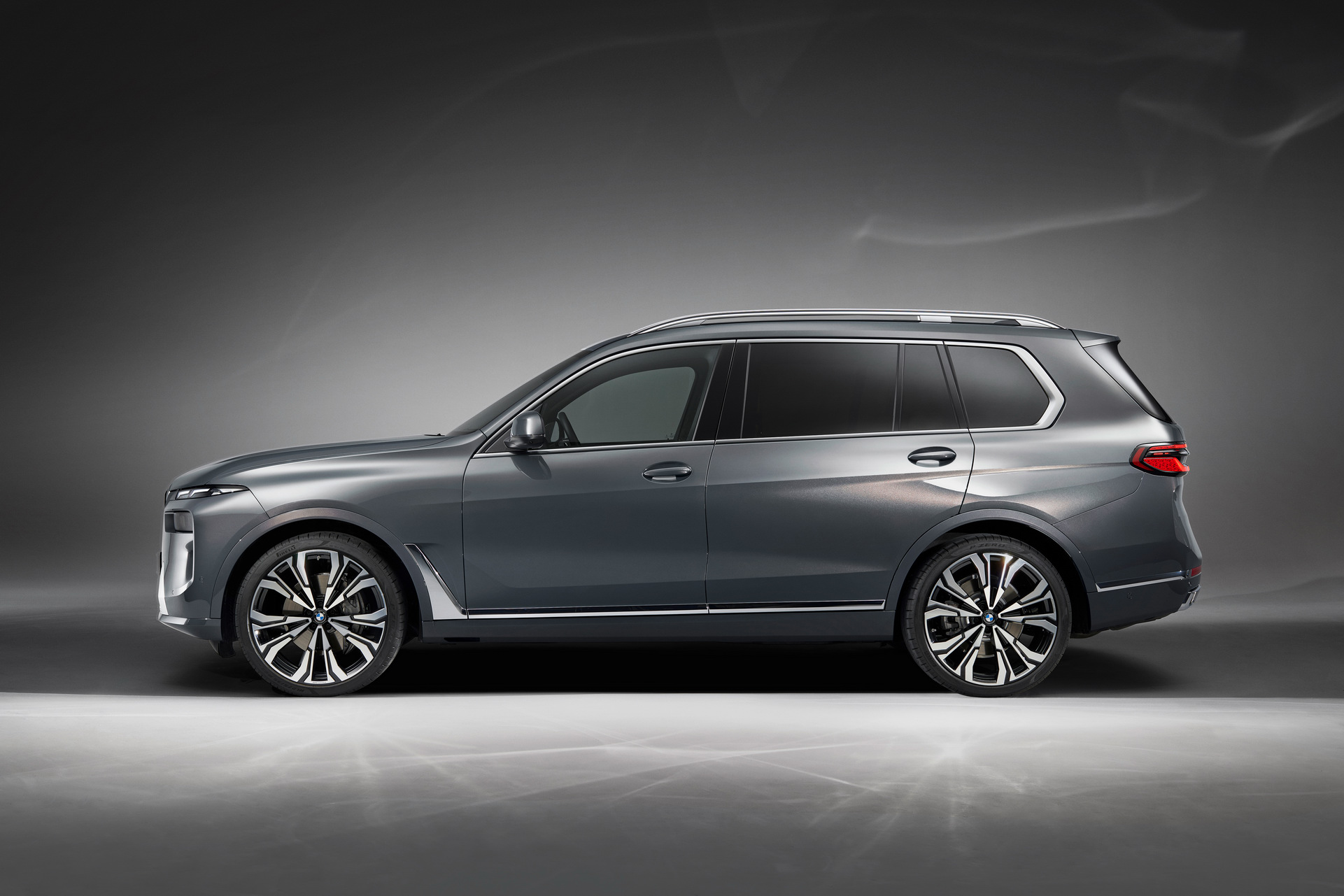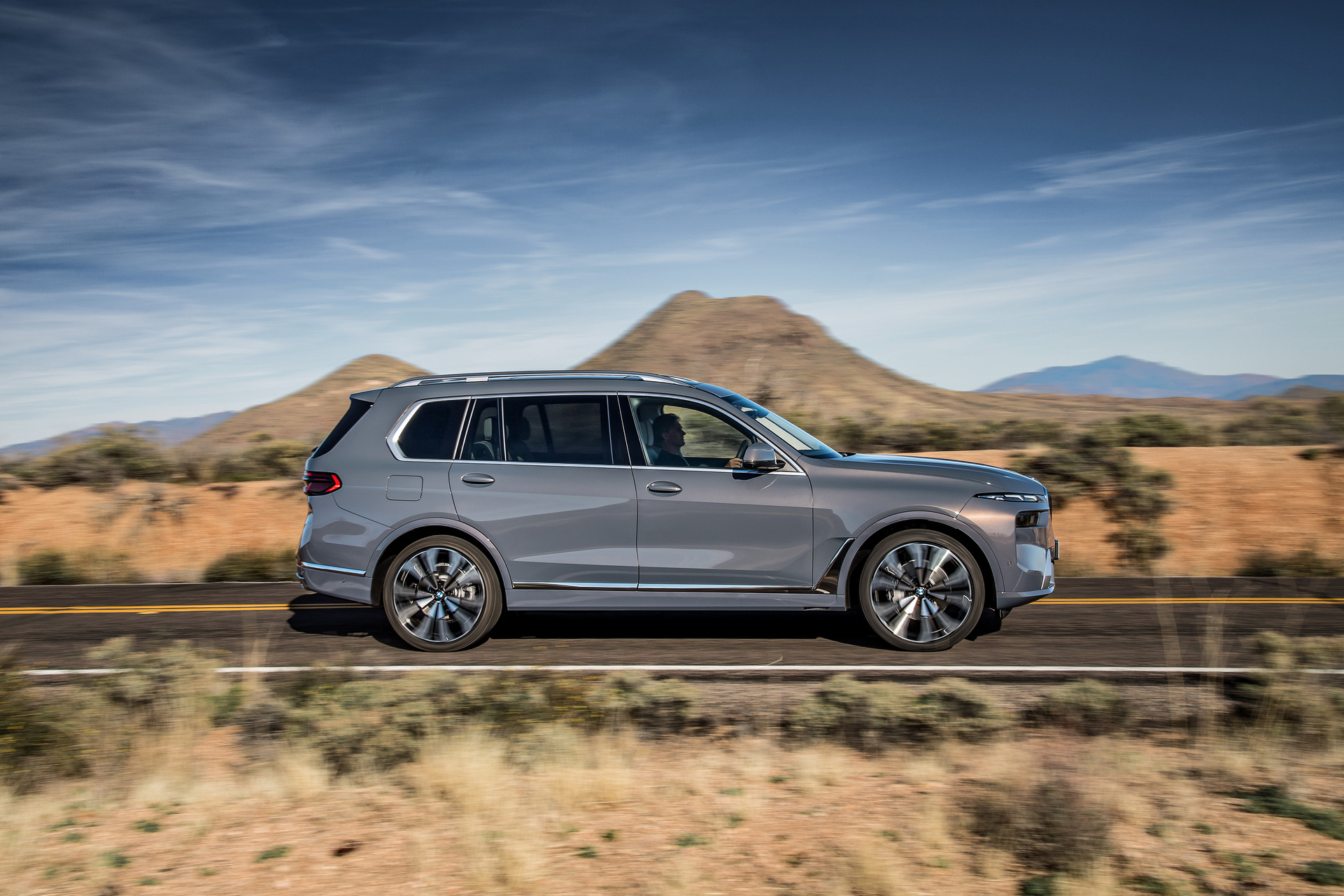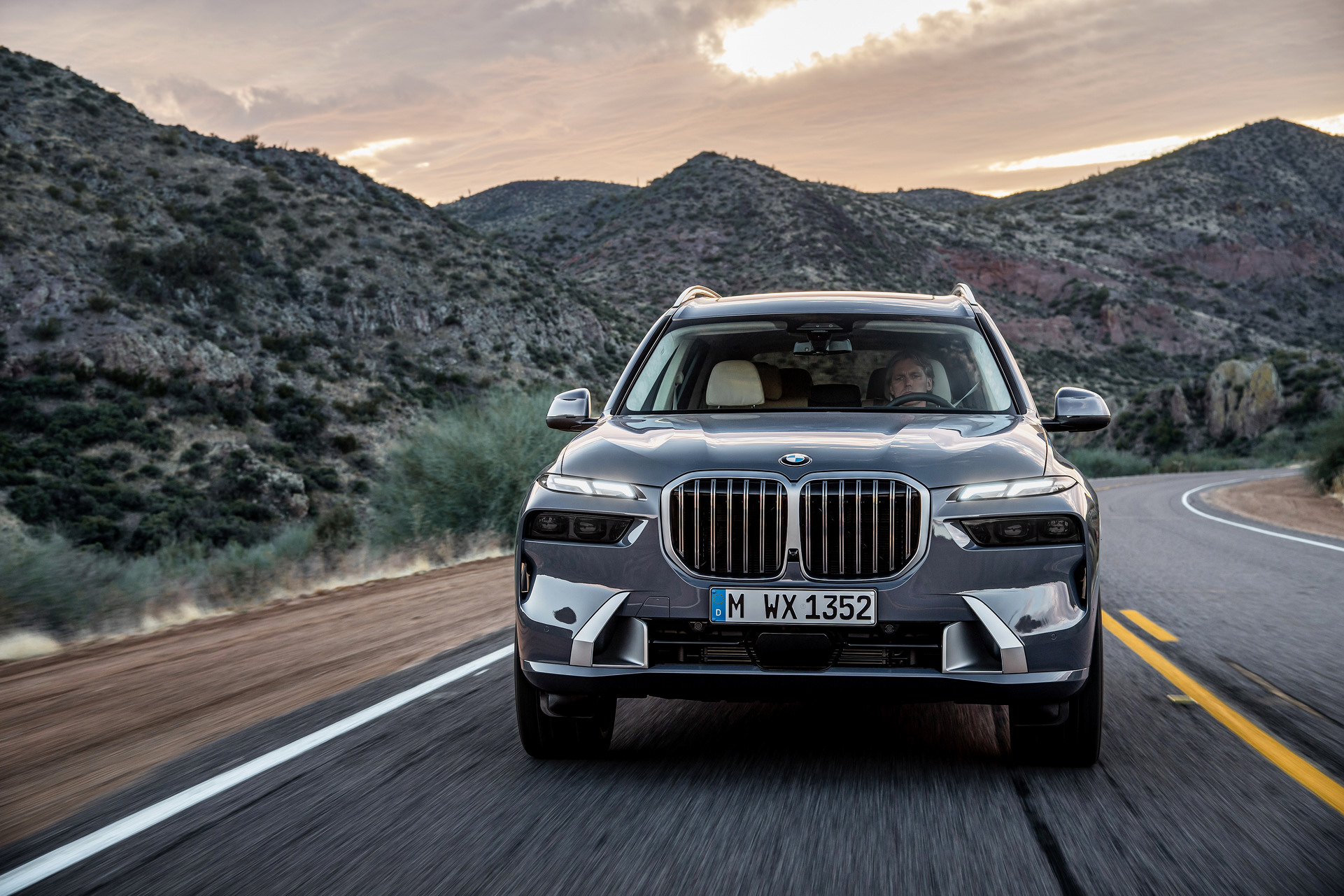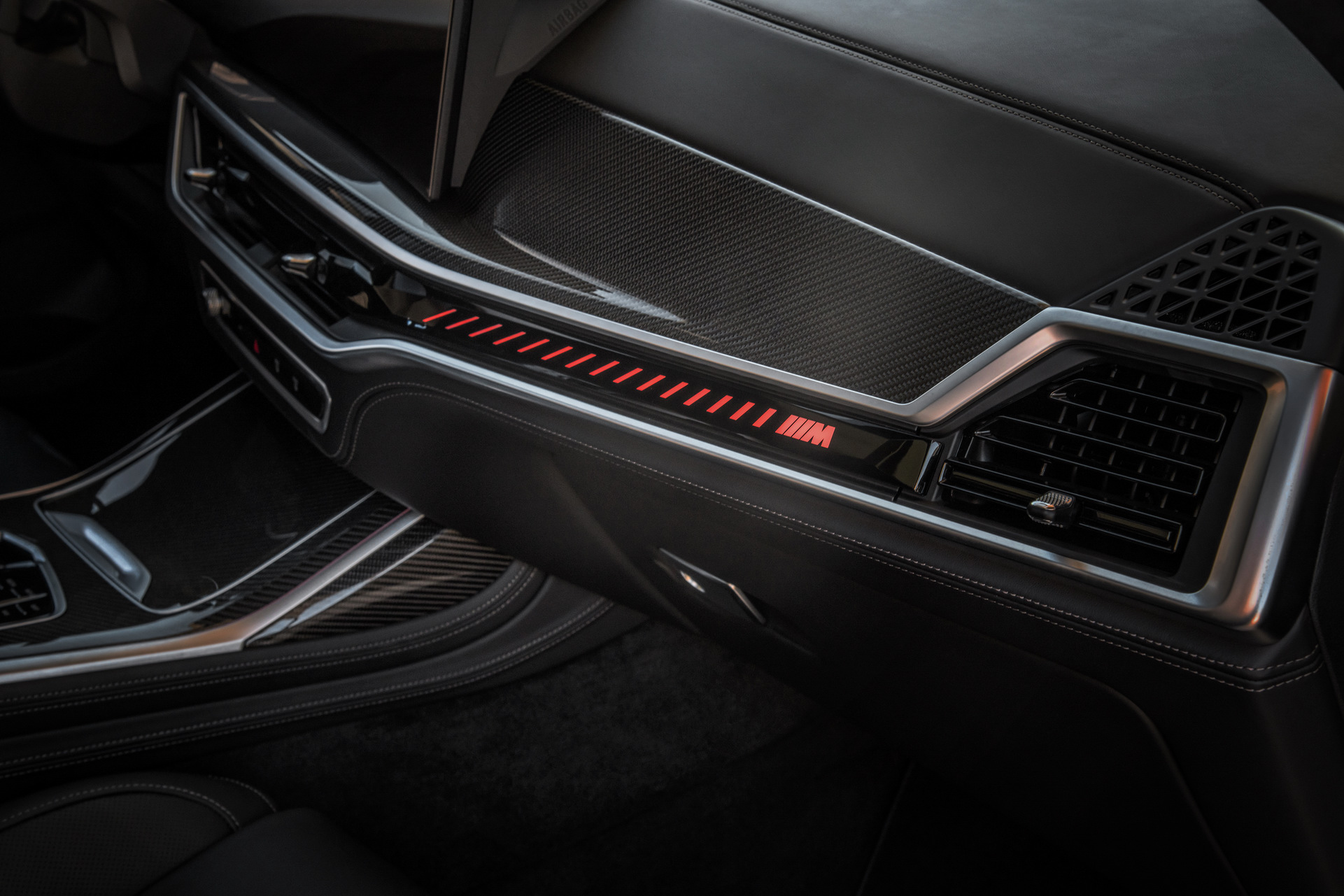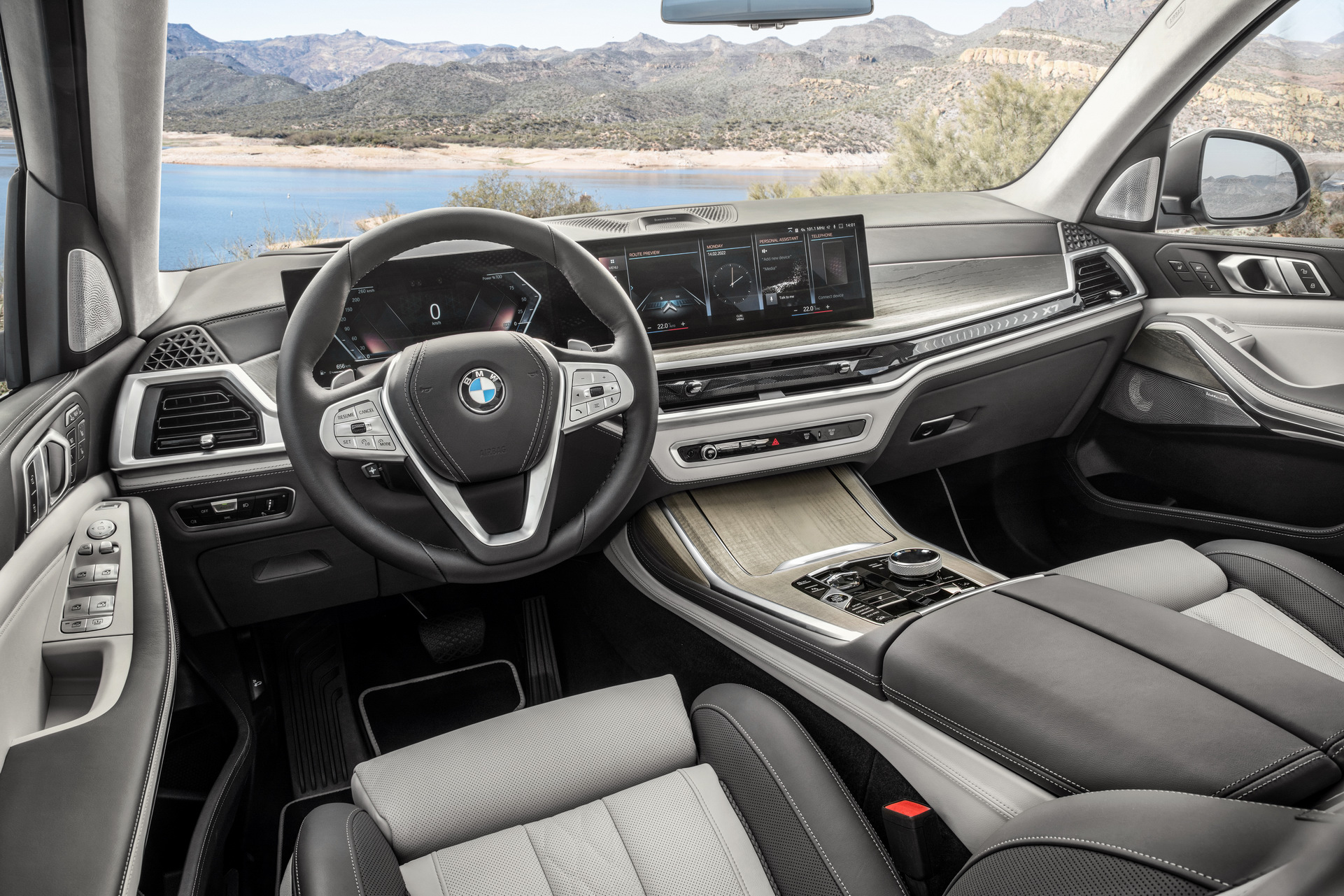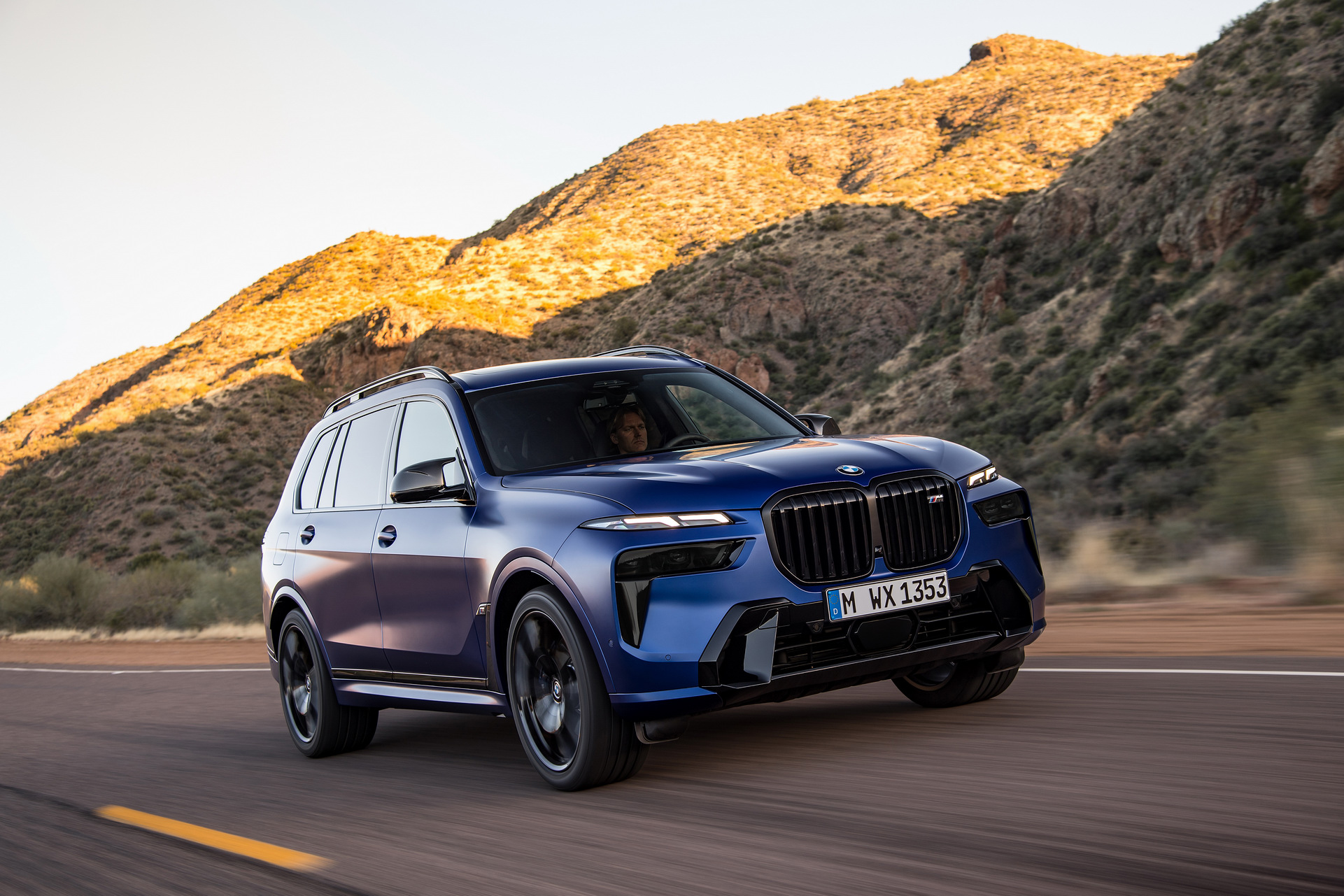BMW has lifted the veil on the 2023 X7 SUV and there’s a good chance some of you are begging for it to put it back down again.
Spy shots and renders had already given us a solid indication of what BMW had planned for the facelifted X7, but it’s still a shock to see that new face with its dramatically split light clusters. Better get used to it, though. BMW says this is the new corporate look for its luxury models, meaning the upcoming 7-Series, i7 and Alpina XB7 are also in line for the same treatment.
Related: BMW And Audi Are Jumping On The Split-Headlight Design Trend
The narrow strip of lights mounted just below the hood aren’t in fact headlights but LED daytime running lights that double as turn signal indicators. The real headlights are sneakily located in a dark shroud lower down bumper, the idea being that other road users won’t even notice they’re there unless an X7 is coming towards them at night.
With your eyes naturally drawn to the new lighting arrangements and the satin aluminum inlays at the base of the bumper, you could almost forget the fuss we all made about the X7’s jumbo grille a few years back. It hasn’t got any bigger for 2023, but now features a bi-color design, and X7 xDrive40i buyers can pay extra for the illuminated grille feature that comes standard on the M60i. Rear styling changes are limited to two new LED lamp units and a glass cover for the chrome bar linking them.
Don’t wait for an XM7, but M Sport and M60i look the part
Go for the optional M Sport package and your X7 xDrive40i will arrive equipped with M-specific front and rear bumpers and side skirts, lashings of high-gloss black trim, dark-finish trapezoidal tailpipes and double-spoke, two-color 21-in wheels.
The flagship M60i goes a step further with air-friendly M door mirrors, gaping air intakes, an M-badged grille, quad tailpipes and 22-in rims, and if you really want to ram home the motorsport theme, the M Sport Professional package includes extra Shadowline trim and black or blue brake calipers. Or better still, specify “BMW M 50 Years” emblems for the hood, tailgate and wheel center caps to show your acknowledgement of M division’s half century of making BMWs go (or, in this case, just look) faster.
New curved dashboard display, but where’s the gear shifter?
The biggest visual change after the headlights though is found inside the X7. In place of the old car’s traditional instrument cluster and separate touchscreen display, the facelifted SUV gets a combined curved display comprising a 12.3-in digital gauge pack and a 14.9-in touchscreen with BMW’s latest iDrive 8 software. The screen is subtly angled towards the driver like most BMW dashboards of the past 45 years have been, but can still be seen and operated by the passenger.
Another big change is the absence of a traditional gear shifter for the ZF eight-speed automatic, the old car’s joystick lever making way for a much smaller toggle located alongside the faithful iDrive rotary controller. How long til that thing bites the bullet?
We hope it’s got a few years left yet, though that might be wishful thinking now that the voice-activated BMW Intelligent Personal Assistant’s roles have been extended to even include opening the windows and panoramic sunroof. Other labor-saving technologies include the Digital Key Plus option, which lets drivers lock and unlock their X7 using a smartphone.
Welcome power boost for entry-level xDrive M40i
X7 interiors can be configured with six or seven seats, and to make sure you’ve always got enough performance on hand even if you’re hauling seven bodies, the base xDrive40i gets a 40 hp (41 PS) boost to 375 hp (380 PS), while torque is up 52 lb-ft (71 Nm) to 383 lb-ft (519 Nm) and can reach as high as 398 lb-ft (540 Nm) when the 48V mild-hybrid tech is chiming in to help out the 3.0-liter inline-six. Send that lot to the pavement through the standard xDrive all-wheel drive system and you’ll hit 60 mph (96 km/h) in 5.6 seconds, BMW says.
But if you like the idea of chopping more than a second from that number you’ll need to upgrade to the M60i. The hotter X7’s 4.4-liter V8 also benefits from 48V mild-hybrid tech for 2023 and breathes through a standard sports exhaust. Curiously, despite the technical upgrades, the 2023 M60i makes the same 523 hp (530 PS) and 553 lb-ft (750 Nm) as the older M50i it replaces, and posts an identical 4.5 second zero to 60 mph (96 km/h) time.
Which might be enough reason for you to wait for the upcoming Alpina XB7, whose 4.4-liter V8 BMW says climbs from 612 hp (621 PS) to 630 hp (639 PS). Again, though, torque is unchanged at 590 lb-ft (800 Nm), and the 4.0-second zero to 60 mph time and 180 mph (290 km/h) top speed stats are no better than the current car’s.
But the 2023 X7 models might feel a little quicker on the street thanks to a new Sprint function: pull the left hand shift paddle and the transmission drops to its lowest available gear, while the engine and chassis settings all switch to their sportiest settings.
That chassis includes standard air suspension on both models. The M60i adds active roll stabilization and rear-wheel steering, but if you want either of those on the xDrive40i you’ll have to tick some boxes on the options list. Get too carried away, adding kit like BMW’s first ever 23-in wheel option, and you might find your $77,850 (plus $995 destination) xDrive40i starts to get so close to the $103,100 M60i that you might as well go for the big dog. U.S. cars arrive in fall 2022, so you’ve got a little time to decide, and even longer if you’re considering the Alpina XB7, which doesn’t land until early 2023.
Do you like BMW’s styling revisions for the X7? Or are these new lights even worse than grille-gate? Leave a comment and let us know.





